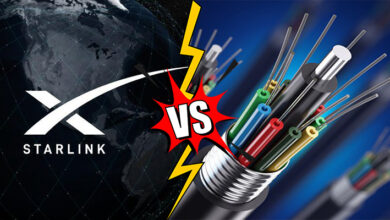
Marketplace: 4 strategies to set take-up rates
The “take rate” is the charge a marketplace or platform startup will charge for transactions on their platform.
Below are the results of an analysis of over 25 public and private marketplaces, while no formula is set in stone. To help guide founders’ decisions, I will use these considerations as a guide.
For purposes of this piece, the term “take rate” will be defined as a percentage, which is calculated by dividing the revenue made by the platform by the transaction’s value.
Marketplaces aren’t about maximizing take rates.
The goal of maximizing the take rate of a platform shouldn’t be to maximize the number of users.
It may be advantageous to charge a lower take rate than you can sustain to gain a competitive advantage since a higher take rate leads to lower transaction volume.
In the case of startups, you can see this when pursuing relatively developing markets for growth. OpenSea charges a relatively low transaction fee of 2.5% in comparison to other marketplaces. Due to the developing nature of NFTs, their low costs reduced the friction to trading and helped the market grow.
Economies of scale also occur in highly competitive markets that have some winner-take-all dynamics. In the case of this market, the take-rate could be lower to grab market share or scale.
Markets that offer value-added services, such as value-adding services, can charge higher take rates.
Setting your goal should generally be based on the following: (take rate x average transaction value – variable cost) x (number of transactions).
Note:
- There is often a tradeoff between taking rate and transaction volume.
- It may be better for long-term outcomes to have a lower take rate in the short term.
- By charging a lower rate than what you can “get away with,” you may be able to retain more customers and create more value over time.
Analyze your market’s nature

Several market-driven factors will determine the range within which you may operate.
When understanding the nature of the market, entrepreneurs should consider the following factors:
- Is the product sold digitally or physically, and what is the margin?
Due to a zero cost of production, digital products are infinitely reproducible, allowing marketplaces to charge higher take rates.
As a result, marketplaces dealing with physical products may charge less since their suppliers have a lower gross margin. Among digital marketplaces, 30% of them tend to sell physical products, while 15% to 20% sell digital.
- Competition
Studying their markets should also include thinking about the next best alternative if they don’t use their marketplace – the competition and what they look like. It is possible for direct competitors to become competitors or for broker intermediaries to become competitors (which refers to an offline process).
A good exercise is to find out the take rate charged by the competition based on their services.
- Suppliers are concentrated on the platform.
The more fragmented the marketplace, the more it can reasonably charge since every supplier has less bargaining power.
Because there are only five key suppliers, travel marketplaces can only charge airlines 3% to 5%. For hotels, where fragmentation is more significant, it is possible to set 15% to 20%.
- Buyers congregate on platforms.
Individual buyers are typically using consumer marketplaces, so buyers are fragmented, and the take rate is lower on a marketplace with a consolidated group of buyers.
Peloton is one of Affirm’s customers, making up 20% of its sales. Although the customer does not break down the Take Rate at Affirm, the company may have negotiated better rates, making the Take Rate lower.
Distribution (and the charge for it) are kings.

It is crucial to driving distribution for your suppliers on your platform to charge a take rate.
In other words, do your suppliers think their presence on your platform is leading to incremental sales? Will they have to handle all marketing tasks on their own?
Platforms that don’t do much distribution and only provide infrastructure or transaction processing typically receive 2% to 5% of the sale price from suppliers. Since they give infrastructure to operate a store, companies like Shopify charge a take rate of about 2%. As opposed to Amazon, which charges 15% since it develops incremental distribution from aggregated customer demand.
In many cases, suppliers will pay up to 60% of their gross margins on incremental sales.
Some platforms have even gone so far as to set different take rates based on other distribution methods, which is contrary to most marketplaces that charge a blended take rate based on their ability to drive incremental demand. Udemy, for example, charges a 3% take rate when instructors sell their courses, but a 50% take rate if Udemy does the selling.
A value-added service strategy to raise take-rates
A marketplace’s take rate is higher the more value it provides in the form of value-added services. The take rate can also be increased over time by adding value-added services.
These services provide incremental value in the following areas with rough estimates:
- Payments
They can charge an additional 3%-5% take rate because of the payment and transaction processing they provide. A large portion of this comes from processing fees.
- Controlling and authenticating the quality
The charge for marketplaces that can verify items and manage quality typically ranges from 2-5 per cent extra. For instance, GOAT charges 14% on sneaker sales, partly because it confirms the authenticity of the products. On the other hand, the charge for eBay is 9%, and it is not managed.
- Advertising

Markets with aggregated customers often benefit from advertising to increase take-rates. Suppliers who want more sales can buy ad inventory from marketplaces without raising take rates for suppliers who don’t.
Companies like Alibaba and Amazon have driven an incremental 2% to 5% of taking rates from their advertising businesses, even though they benefit from advertising varies based on its effectiveness.




